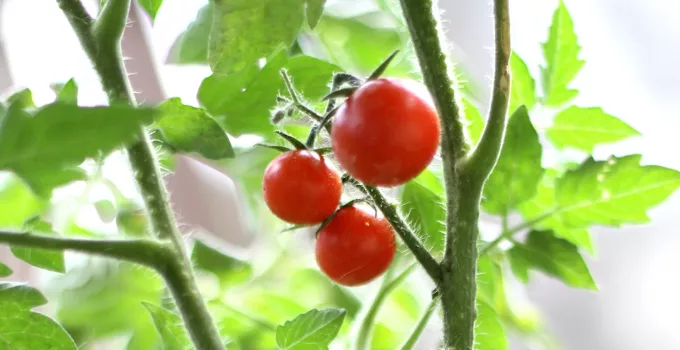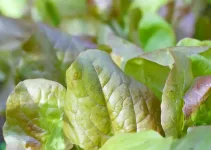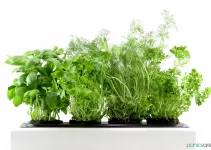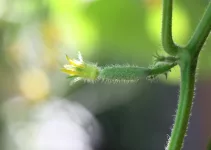If there is one thing you’re going to discover in my article on how to grow hydroponic tomatoes is that these plants, call them fruits or vegetables or both, are quite demanding.
They’re not the easiest to grow but they also offer immense satisfaction. If you needed a new challenge, consider it delivered. However, if potting soil is more of your thing, check out my picks for indoor tomato growing kits.
Table of Contents
How to Grow Hydroponic Tomatoes: Systems for Beginners
1. Good: AeroGarden Bounty
The thing with the Bounty system from AeroGarden is that it comes with kits. For example, there is the Red Heirloom Cherry Tomato Seed Pod Kit. It includes the pods with the seeds inside, the domes, and the hydroponic nutrients needed for one round. There are other kits that we can choose. It’s perfect for beginners who want to learn how to grow hydroponic tomatoes.
2. Excellent: Aerospring 27-Plant Vertical Hydroponics Indoor Growing System
The Aerospring 27-Plant Vertical Hydroponics Indoor Growing System is unlike any other hydroponic garden. It’s like a mini tower for growing whatever plants we want, including cherry tomatoes. It’s complex, very expensive but a joy to look at and use.
3. Affordable: iDOO 20 Pods Indoor Hydroponics Growing System
This is an affordable system that allows us to grow 20 smaller plants at the same time. We won’t be growing 20 tomato plants but it’s still incredible how many pods it has for such an affordable price. I like it a lot.
How to Grow Hydroponic Tomatoes: Conditions
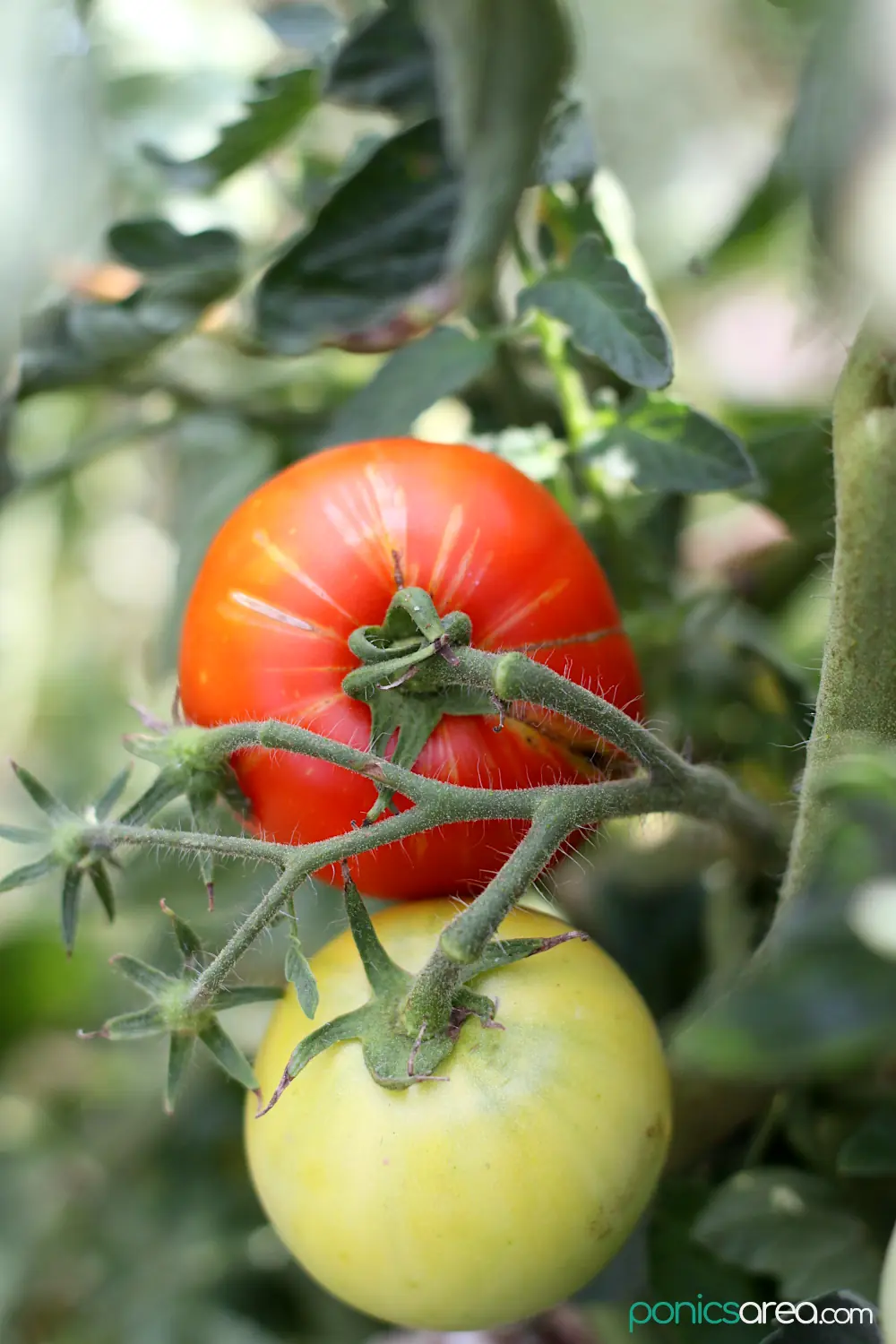
The first thing you need to be aware of before starting to grow tomatoes hydroponically is that these plants are water-hungry. They’re also nutrient-demanding. You’ll see exactly why that matters when I’m going to talk about systems in a minute.
1. pH & EC
Tomatoes like a pH between 5.5 and 6.5 – this is the average pH that you come across when you’re starting to study hydroponics. If you want to get more precise, optimum pH levels are between 5 and 6.
So, in this regard, they’re quite simple.
However, in terms of the recommended EC levels for hydroponic tomatoes, things are a bit more complex.
First of all, we have different EC levels for winter and summer:
- summer, vegetative stage: EC of 1.8-2.5
- summer, fruiting stage: EC of 2.3-3.5
- winter, vegetative stage: EC of 2.3-2.7
- winter, fruiting stage: EC of 3.0-4.0
The idea is that, under warm and high-light conditions, the EC is reduced. That enables a more rapid uptake of water.
Under winter temperatures and lower light, the EC is increased in order to maintain the crop’s quality and help in strengthening the crops.
If your conditions stay the same all year round, then you don’t need different EC levels.
2. Temperature & humidity
The next demands come in the form of a warm environment and pretty high humidity. It goes without saying that good air circulation is a must.
Hydroponic tomatoes need temperatures of 70 degrees Fahrenheit or higher (at least 21 degrees Celsius). Those who house their set-ups in garages, will have to consider this aspect.
Ideal temperature levels are between 71 and 79 degrees Fahrenheit (22 and 26 degrees C).
Humidity levels should be at least around 50%. That’s the minimum that I recommend for someone who doesn’t have hydroponic systems installed in greenhouses. That’s on another level.
According to The University of Arizona, regarding humidity levels for tomatoes, we should strive to achieve between 65-75% during the night and as much as 90% during the day. Those are some high levels that are the concern of industrial producers. That’s why I recommended humidity to be around 50%. That’s more achievable.
3. Install trellis
Indeterminate tomatoes are heavy plants that can grow really tall, which means that they need additional support for growing upright. These are the varieties that produce flowers and fruit throughout the life of the plant, which is why industrial growers mostly go for them.
Hydroponic tomatoes might be possible of giving a 40% higher yield but they can reach high heights, too. This growing method has become of great interest worldwide thanks to the possibilities of implementing new technologies that push yields higher.
Where to Buy?
Check Price and User Reviews Here
Because of that, you should install trellis in the grow bed. This is one additional cost that’s not cheap but it also depends on what type of support system you buy.
4. Or grow tomatoes for small spaces
The alternative is to consider growing only tomatoes for small spaces, compact bushy plants like:
- Better Bush
- Bush Beefsteak
- Bush Early Girl
- Clear Pink Early
- Early Wonder
- New Big Dwarf
- Red Rocket
- Tiny Tim
- Tumbling Tom
- 506 Bush
- Baby Boomer
These are also known as determinate tomatoes. Keep in mind that Tiny Tim is the only cherry tomato on the list.
There are also indeterminate varieties that work very well for hydroponic systems, like the Gardener’s Delight Cherry or Napa Grape or San Marzano.
Another advantage with growing these small tomatoes varieties is that they are more quick to reach harvesting stage. An average of 60 days is all it takes.
You can also discover even more varieties, with complete information for each, in my article on how long does it take for tomatoes to grow.
Where to Buy?
Check Price and User Reviews Here
5. Nutrient solution for growing hydroponic tomatoes
The easiest answer to hydroponic tomato nutrient requirements is: get a hydroponic nutrient tomato & vegetable formula.
You can also make your own all-purpose nutrient solution, if you want to decrease costs. This article can guide you on what you need for that.
On the other hand, if you are only interested in organic hydroponics, I advise you to switch your focus to aquaponics.
Aquaponics is totally different because it replaces nutrient solutions with the waste generated by fish farming. Fish waste represents the nutrients needed to make plants grow. And you can enjoy some fish on the side. It goes well with tomatoes, lemon, rosemary and thyme.
Detailed analysis on hydroponic tomato nutrient requirements
There are 3 main nutrients needed to grow healthy productive hydroponic tomatoes:
- N (nitrogen) for plant growth and development
- Ca (calcium) to prevent blossom end rot
- K (potassium) for fruit quality
Other primary nutrients include P (phosphate) and Mg (magnesium).
Don’t use any nutrient solution during germination.
Plus, increase the quantity of nutrients used as the plant grows and matures. It will require the most when it develops fruits.
Young tomato plants don’t require as much N. Too much will lead to thick stems, curled leaves and reduced flowering. Ca and K are also not needed in large quantities.
As the plants grow bigger, more N is needed. Ca and K are needed in increased quantities when fruits start growing.
When the plant reaches mature stages and is full of fruits, that’s when you need to use the maximum nutrient concentration.
Where to Buy?
Check Price and User Reviews Here
6. Grow lights
Tomatoes requires up to 16 hours per day under artificial light. Full-spectrum LEDs are a good choice. HIDs are a lot more expensive and more demanding.
Under sunlight, 8 hours is enough.
Where to Buy?
Check Price and User Reviews Here
7. Pollinate by hand
If you grow hydroponic tomatoes indoors, you have to shake the flowers in order to pollinate them, since there’s no wind.
In greenhouses, commercial growers usually use an electric or battery-powered vibrator to vibrate flower clusters. They usually activates these vibrations twice a day.
By the way, these conditions that I mentioned for tomatoes can also help you grow hydroponic peppers. They share a lot of things in common, including the fact that both these plants are technically fruits but are called vegetables by everyone.
How Long Does it Take to Grow Tomatoes Hydroponically?
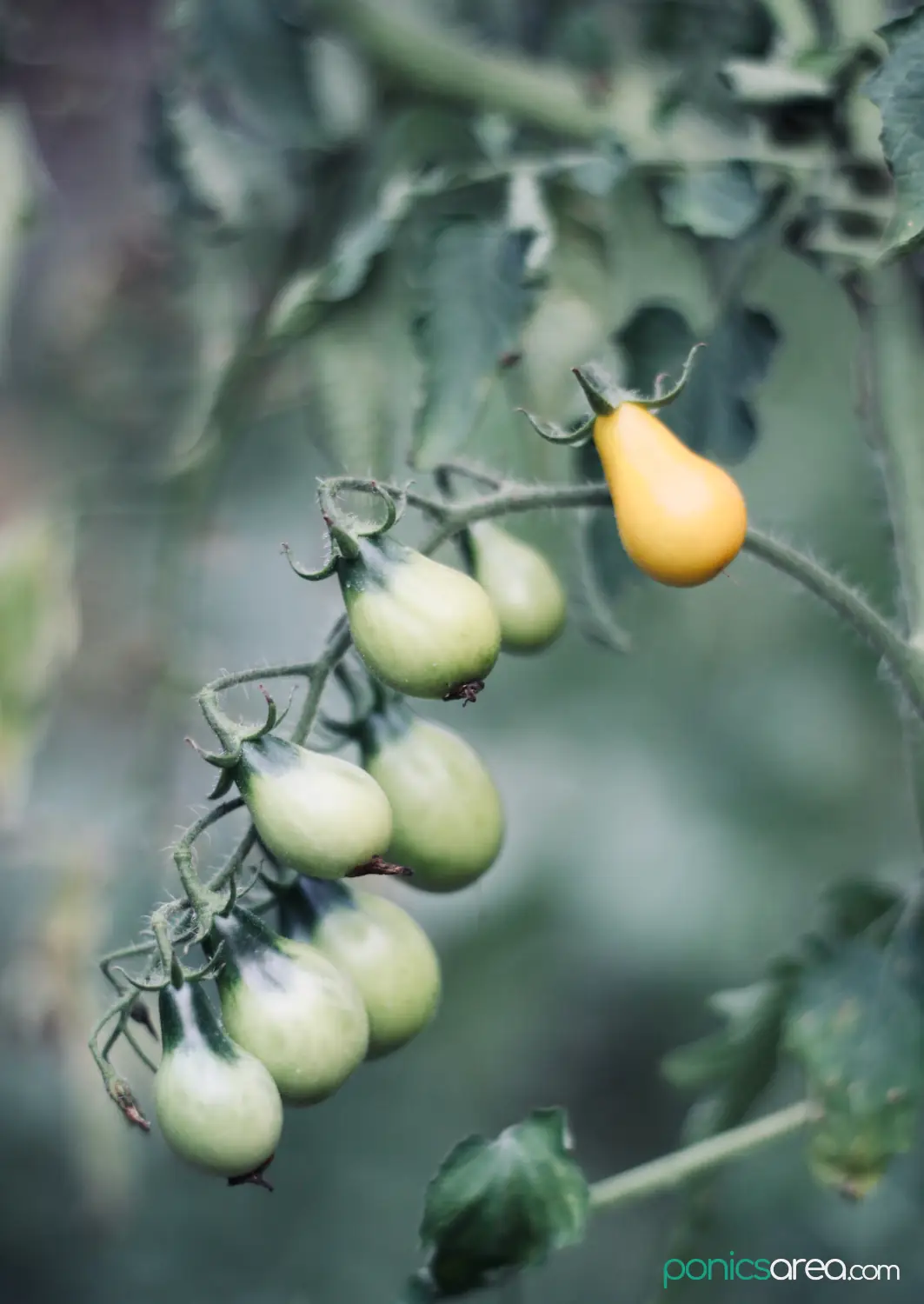
The short answer is that it can take anywhere from 2 to 3 months (50 to 100 days) until tomatoes reach harvesting stage.
You’ll be able to tell when they can be harvested by their size and color.
Hydroponic tomatoes growing time
- 5 to 10 days to germinate – when those tiny seedlings appear
- germination can be done in rockwool cubes at a temperature of 77 degrees Fahrenheit (25 degrees C)
- after those first tiny leaves appear, once the cotyledons have expanded, a nutrient solution can be applied
- the seedlings cannot be transferred into the hydroponics system until they’re about 6-8 inches (15-20 cm) tall, which takes 3 to 6 weeks – the plant should be as wide as it is tall
- it takes another 1-2 months until producing fruit
Greenhouse tomato crops on the industrial scale can actually take place over an 11-month period, they are grown as long-term crops on a high-wire system.
The other option is having two crops per year, with planting in spring and then autumn.
The System that Doesn’t Work for Hydroponic Tomatoes
Before going into the best hydroponic systems for tomatoes of all kinds, let’s see which is the setup that doesn’t work.
I’m talking about the wicking system or wicks for short.
It’s a perfectly good cheap set-up for lettuce and small herbs but it doesn’t work for growing plants that consume a lot of water or need lots of nutrients.
As I told you above, tomatoes are water-hungry and nutrient-demanding plants.
What does that have to do with the wicks system?
The answer is actually in its name: a wick cannot deliver the needed water that water-hungry vegetables need.
Thus,
I wouldn’t recommend growing tomatoes hydroponically in a wicks system.
A wick system is a great start into hydroponics because it’s easy to build at home and it doesn’t require a water pump but it has these limitations that I’ve mentioned here.
If this is your current system and you’re interested in knowing how to grow hydroponic tomatoes, you need to read further.
The Best Systems for Growing Hydroponic Tomatoes
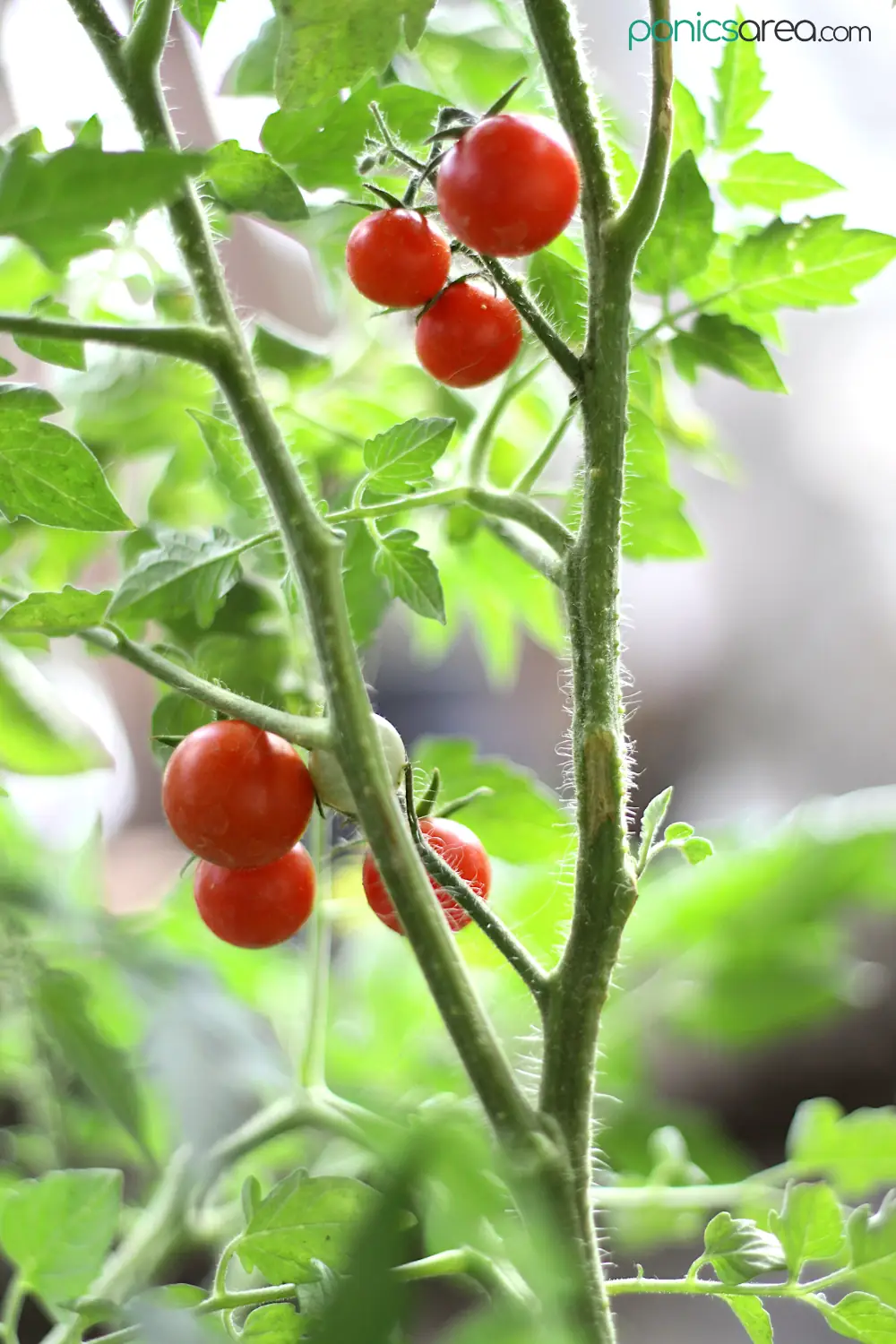
Besides the wicks, you can use all the others to grow hydroponic tomatoes.
You can grow in DWC, NFT, ebb and flow, drips, and aeroponics. Aquaponics is also good if you like fish and you’re interested in organic crops.
The hydroponic drip system is definitely the preferred option for growers of tomatoes and cucumbers. It’s perfect for larger plants.
1. Easy-to-Make Hydroponic Tomatoes DIY Systems (DWC)
I definitely recommend the DWC (deep water culture) system. It can be used to grow everything from lettuce, basil, cilantro, parsley, strawberries, blueberries to bigger plants like tomatoes, cucumbers, eggplants and even citrus trees (orange, lemon and mandarin).
Those who don’t want to spend too much money, should first consider the following two possibilities as systems for how to grow hydroponic tomatoes:
- DWC buckets system – you can only grow one tomato plant per 5 gallon bucket but you can link in a row as many buckets as you want and have space for; use 6-inch net pots for the five-gallon bucket systems
- DWC system with a tote container – you just have to make sure that the plants don’t get too heavy because they will be inserted into the plastic lid of the storage tote
If you have a DWC buckets system or a DWC system with a tote container, you will just need to make bigger holes to accommodate larger plants like tomatoes.
In these types of systems you can also use tomato cages for support, as the plant grows in height. If you have experience with growing tomatoes in the ground, you know exactly what I’m talking about.
The cheapest alternative to cages is to tie up the tomato plants to stakes.
There’s also no need to purchase a water pump. You do need an air pump.
You are also spared the extra expense of buying hydroponic grow trays.
These systems work best with hydroton as growing medium (expanded clay aggregate) and the tomato seeds can be germinated in rockwool cubes and transplanted with the cubes.
Where to Buy?
Check Price and User Reviews Here
2. Grow Hydroponic Tomatoes in PVC Pipes (NFT Hydroponic System)
Another options for growing tomatoes hydroponically is in PVC pipes. If you want to see how this set-up looks, I found this video. I will warn you that it’s not exactly a good option for total beginners who are not familiar with building equipment.
You can go for 3-inch or 4-inch diameter pipes with 6-inch holes/pots.
A NFT is the answer if you want to know how to grow hydroponic tomatoes in a system that offers incredible versatility.
But it also requires a bigger budget and it absolutely needs a water pump for pumping up water and nutrients into the grow bed. Check out my post on the best water pump for hydroponics because you will need a pretty strong one.
The PVC pipes will be set-up on a slight incline (about an inch every several feet) so that the excess water is allowed to flow down thanks to gravity. The excess liquid is collected and used again.
This lack of waste is great but you also need to monitor the strength of the solution (nutrients levels) and the pH.
You can’t place the PVC pipes one on top of the other (helix shape) because tomato plants grow tall. That sort of arrangement works for herbs and lettuce.
Since the pipes can’t be stacked, they will require a large space. This type of NFT system will work well outdoors during the warm months or in a greenhouse if you want to grow all year round.
As growing medium you can use rockwool, expanded clay aggregate, coconut fiber, and perlite. But you can also go for more inexpensive options, like sawdust, bark, rice hull.
Can Beginners Grow Hydroponic Tomatoes?
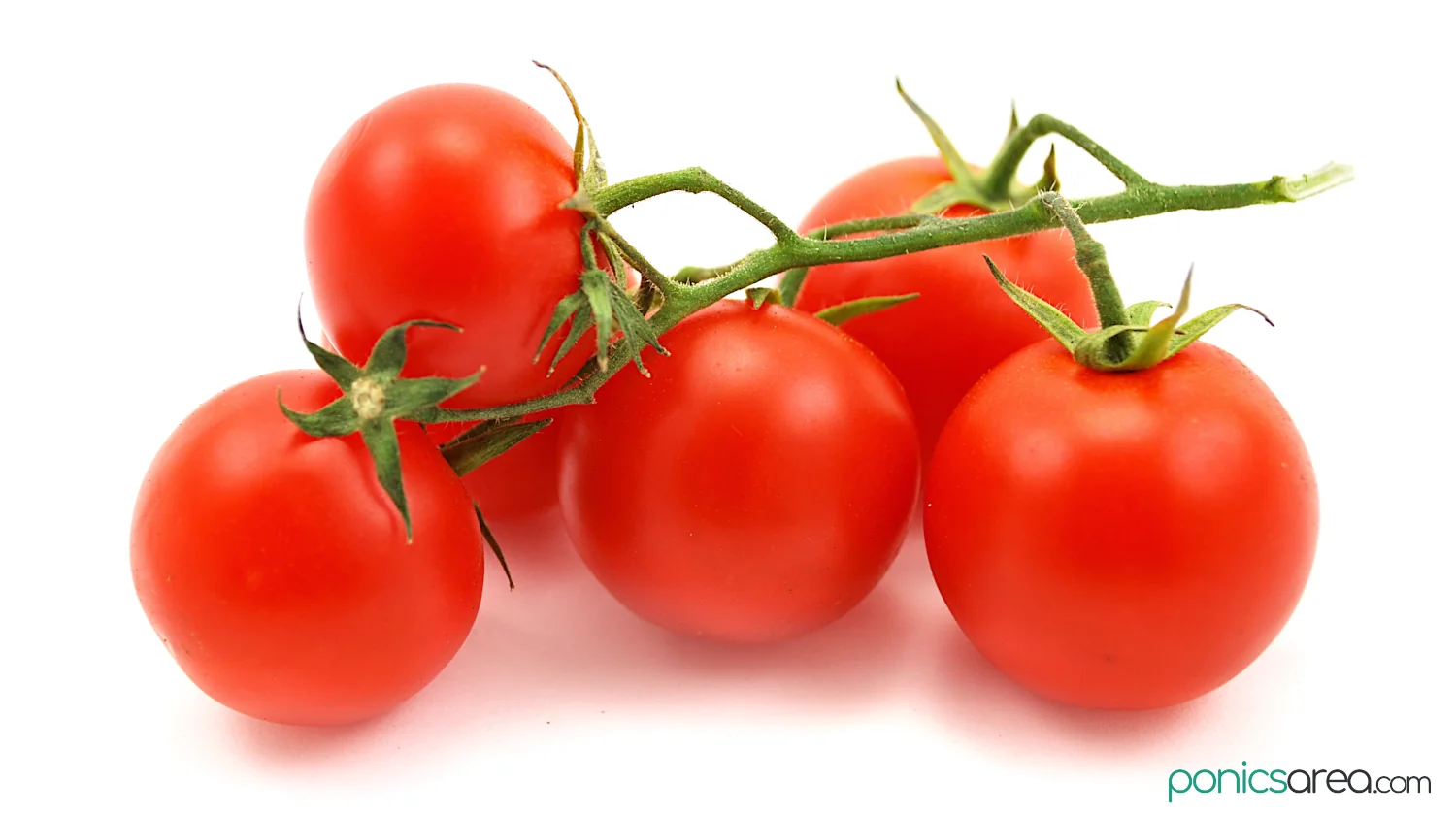
Here’s the thing: I wouldn’t exactly advise you to start your journey into hydroponics by wanting to know how to grow hydroponic tomatoes.
Beginners should start with growing leafy greens and herbs. Hydroponic herbs are just as easy to grow as hydroponic lettuce.
They will also give you a full picture of what hydroponics is without stressing you out. That’s important, to get that initial boost of confidence about this method of growing soilless plants in water and nutrients.
Even so, since we are on the topic of tomatoes, what should beginners know about how to grow hydroponic tomatoes?
Let’s talk about systems.
Tomato Hydroponic Systems for Complete Beginners
For beginners, the whole focus should be on growing cherry tomatoes hydroponically. After all, these small cute varieties are absolutely delicious and you can get so much yield from just a plant.
So, cherry tomatoes should be your focus for your first experience with how to grow hydroponic tomatoes. Focus on the Tiny Tim variety as your first tomato crop.
These are the systems that you can use for hydroponic cherry tomatoes:
1. Hydroponic indoor garden (AeroGarden)
You can buy an indoor garden hydroponic system for tomatoes.
You just need to buy the seeds, otherwise this type of ready-made system will come with everything you need from helpful instructions to grow lights, nutrient solution, net pots, growing medium, and a bunch of helpful alarms for adding water/nutrients when levels decrease.
Some of the best hydroponic kits for beginners are from AeroGarden (expensive) or iDoo (more affordable).
Where to Buy?
Check Price and User Reviews Here
2. Kratky method 5-gallon storage tote
Try the Kratky method – it will work well for cherry tomatoes. You can check my post on hydroponic mason jars if you want to see what you need for this basic cheap system but you’ll have to buy a 5-gallon tote container for tomatoes. Mason jars work very well for lettuce and herbs.
These kind of systems are perfect because they fit even in smaller apartments and they’re a great way to learn how to grow hydroponic tomatoes all year round in a very small space.

